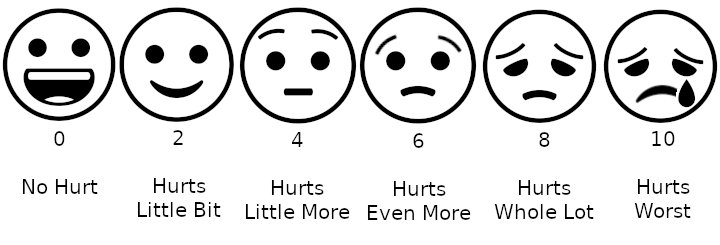California Workers’ Compensation has embraced Evidence Based Medicine (EBM) to dictate industrial medical care authorization.
Thus, when a EBM study is published, the Workers’ Compensation Community looks to its conclusions. The community looks to see the results are aligned with the Labor Code’s mandate to provide treatment to cure or relieve from the effects of an industrial injury.
Back Injury treatment was assessed in a recent EBM study. They looked to see if guidelines treatment achieved favorable results. The results of such a study can shape both insurance company and medical office policy.
This article will discuss the study which looked at California back injury treatment in light of EBM-related guidelines.
What Is Evidence Based Medicine?
Evidence Based Medicine “…integrates medical research with clinical expertise and patient values to support decision making based on the best available evidence.” Gaspar FW, Thiese MS, Wizner K, Hegmann K. Guideline adherence and lost workdays for acute low back pain in the California workers’ compensation system. PLoS One. 2021 Jun 17;16(6):e0253268. doi: 10.1371/journal.pone.0253268. PMID: 34138937; PMCID: PMC8211224.
In other words, an Injured Worker’s treatment is geared more towards past research and study results. The Injured Worker’s treating physician’s clinical impressions are viewed as secondary. Thus, EBM-like treatment is provided in an algorithmic or formulaic fashion.
What Was the Study’s Purpose?
“The aim of this study was to determine the influence of adherence to guideline recommendations on lost workdays for workers with acute LBP(low back pain) claims in California’s WC system.” Gaspar FW, Thiese MS, Wizner K, Hegmann K. Guideline adherence and lost workdays for acute low back pain in the California workers’ compensation system. PLoS One. 2021 Jun 17;16(6):e0253268. doi: 10.1371/journal.pone.0253268. PMID: 34138937; PMCID: PMC8211224.
In other words, treatment currently can be in a number of modality forms. Some are within guidelines, some treatment which is not recommended by guidelines and some others. During an accepted claim, Injured Workers’ treatment are usually authorized. Sometimes, authorized treatment can be ones that are outside of the guidelines.
What Is Guideline Treatment?
Guideline treatment is based upon the “American College of Occupational and Environmental Medicine (ACOEM)’s Low Back Disorders Practice Guideline was used as the source of guideline recommendations [16]. ACOEM’s treatment guidelines have been adopted in California’s Medical Treatment Utilization Schedule (MTUS), which determines what is reasonable and necessary medical care.” Gaspar FW, Thiese MS, Wizner K, Hegmann K. Guideline adherence and lost workdays for acute low back pain in the California workers’ compensation system. PLoS One. 2021 Jun 17;16(6):e0253268. doi: 10.1371/journal.pone.0253268. PMID: 34138937; PMCID: PMC8211224.
What Is the Criticism of the Study?
The study did not look at every back condition. The study limited itself to very specific back conditions. Thus, the results are very limited. The danger of such a study it will be interpreted to apply to back conditions that were not part of the study.
As noted in the study, “to focus on the treatment of uncomplicated LBP claims, claims were removed if they had an inpatient admission during the claim or a “red flag” diagnosis that may indicate treatment outside of guideline recommendations, such as fracture, cancer, infection, aortic aneurysm, and paralysis (S1 Table). Claims were excluded with stenosis diagnoses if they also had an accompanying surgical procedure (i.e., decompression, fusion, or adhesiolysis). Claims were also excluded if there had been a prior LBP claim to remove complicated clinical presentations due to LBP recurrences.” Gaspar FW, Thiese MS, Wizner K, Hegmann K. Guideline adherence and lost workdays for acute low back pain in the California workers’ compensation system. PLoS One. 2021 Jun 17;16(6):e0253268. doi: 10.1371/journal.pone.0253268. PMID: 34138937; PMCID: PMC8211224. [emphasis added]
Thus, the study should not be considered one that should be viewed in an expansive nature. It was limited as many back problems were not addressed. It only address uncomplicated back pain complaints.
What Did the Study Look at?
The workers were placed into categories concerning whether or not they received guideline treatment. Likewise, there were categories in which they received no guideline treatment or no treatment at all. Gaspar FW, Thiese MS, Wizner K, Hegmann K. Guideline adherence and lost workdays for acute low back pain in the California workers’ compensation system. PLoS One. 2021 Jun 17;16(6):e0253268. doi: 10.1371/journal.pone.0253268. PMID: 34138937; PMCID: PMC8211224.
What Were the Study’s Results?
The results of the study were that “[w]hen workers received guideline-recommended interventions, they typically returned to work in fewer days. The majority of workers received at least one non-recommended intervention, demonstrating the need for adherence to guideline recommendations. Fewer lost workdays and improved quality care are outcomes that strongly benefit injured workers.”
The other result of interest was that “workers who received either no intervention or other medical interventions experienced more favorable outcomes than those who received non-recommended interventions” This result suggests that alternative treatment or no treatment is better than non-recommended interventions.
What If I Need Advice?
If you would like a free consultation regarding workers’ compensation, please contact the Law Offices of Edward J. Singer, a Professional Law Corporation. We have been helping people in Central and Southern California deal with their workers’ compensation cases for 27 years. Contact us today for more information.




